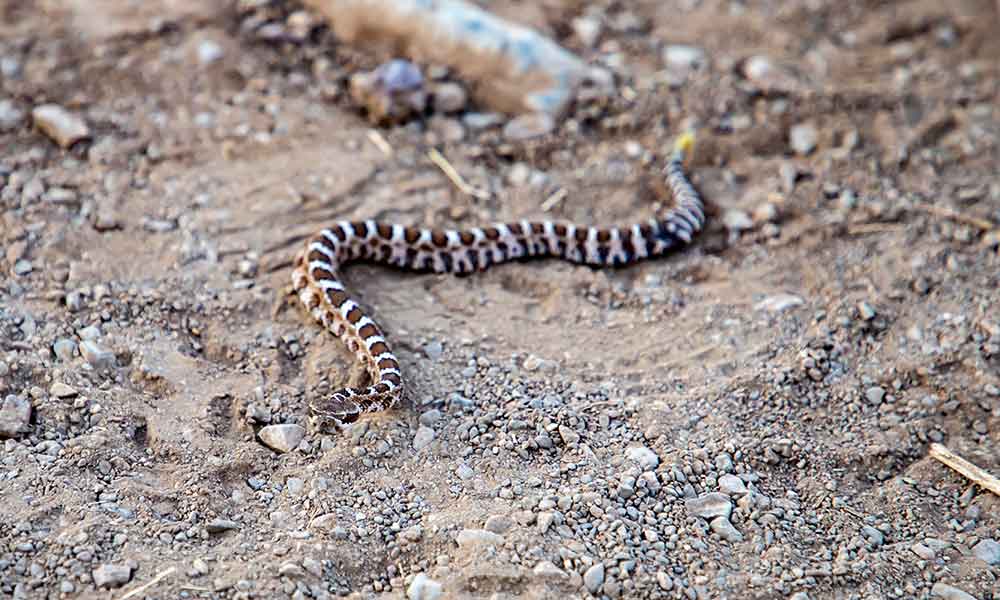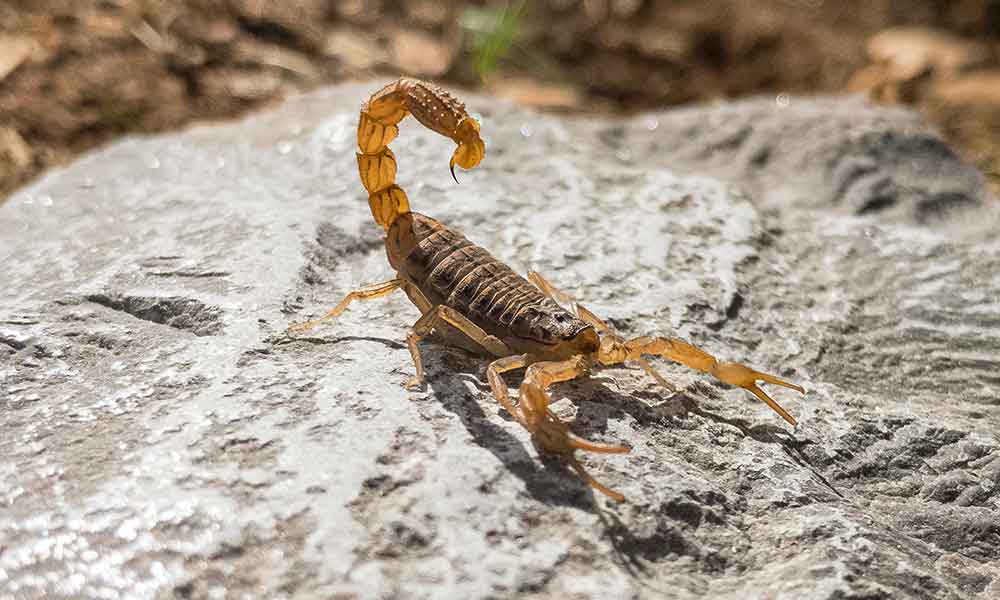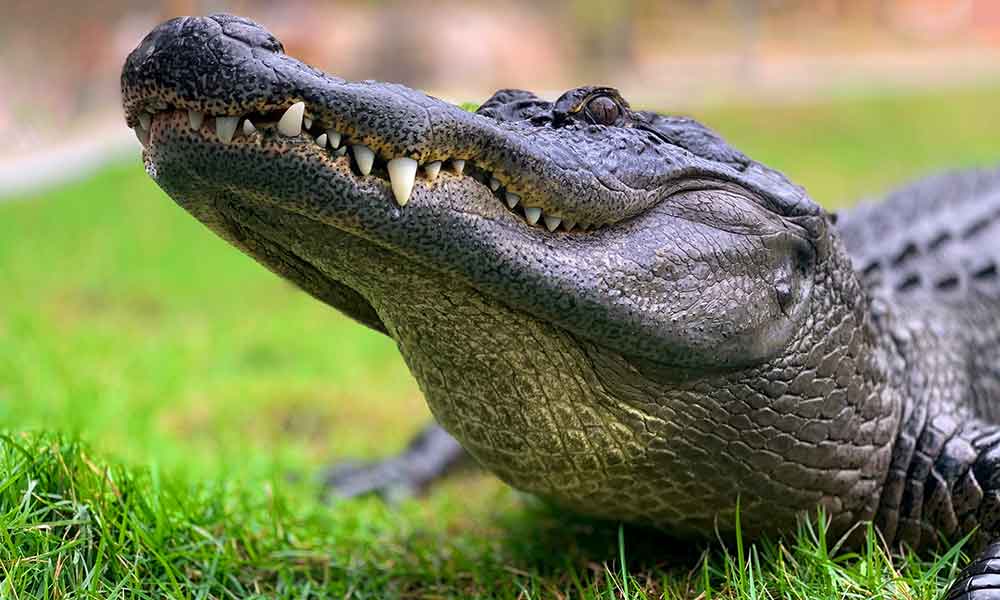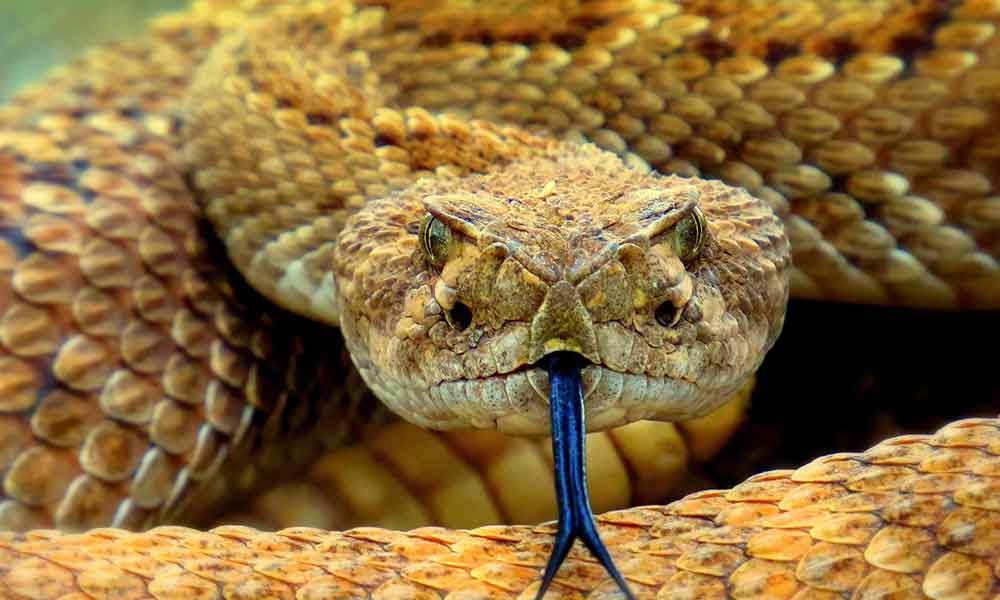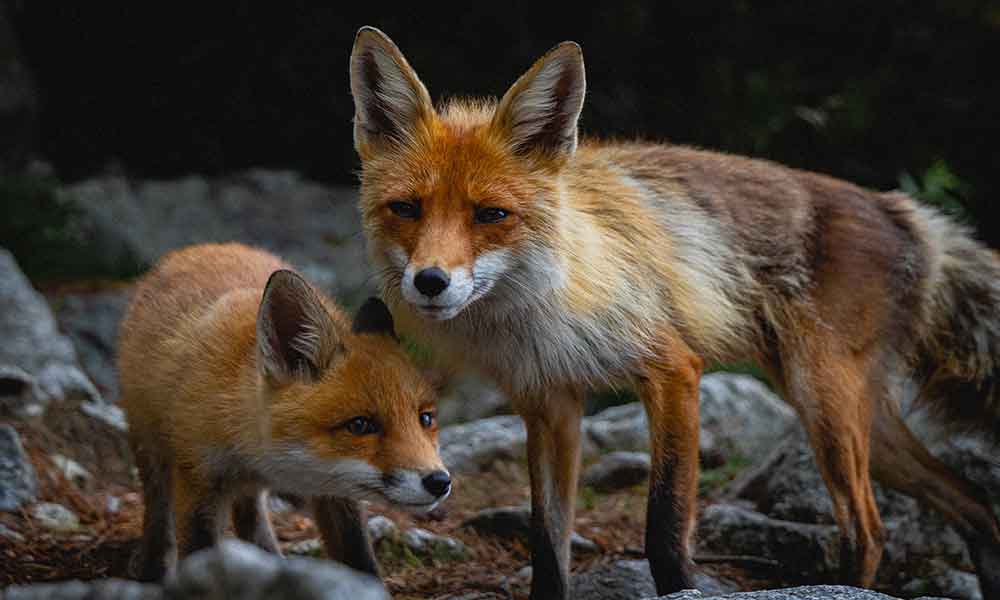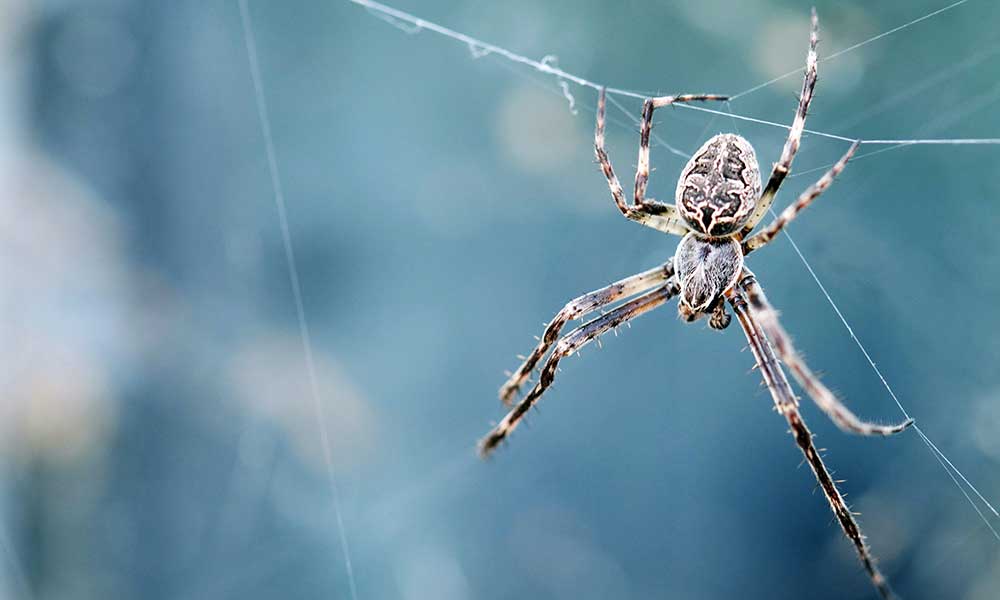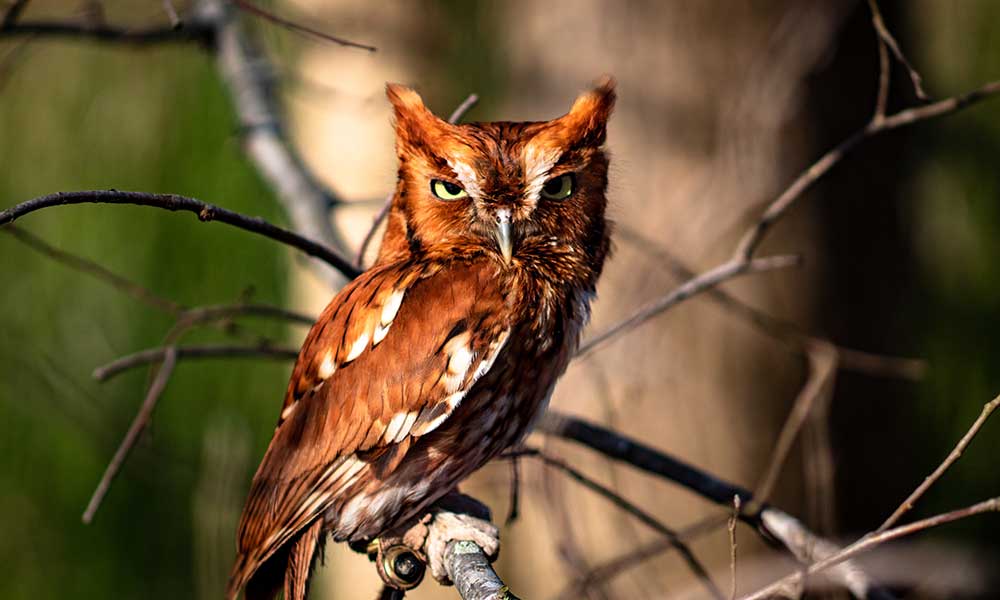Baby rattlesnakes, also known as “snakelets”, may not be as dangerous as adults, but they can still pose a threat. In the following guide, we’ll show you how to identify baby rattlesnakes while also discussing the strength of the baby rattlesnake bite, as well as some other essential information.
How Do You Identify A Baby Rattlesnake?
The most distinguishing feature of a rattlesnake is its rattle, but you won’t find one of these on a baby rattlesnake. Instead, they have a little knob on their tail called a “button”.
Obviously, baby rattlesnakes are much smaller than adults, but they have similar shapes.
Most rattlesnakes have bodies that are thicker in the middle, as opposed to the longer and more tapered bodies of other snakes. This is true even for baby rattlesnakes.
The markings vary by rattlesnake species, but many have diamond-shaped blotches and colors that allow them to remain camouflaged in their natural environment.
Generally speaking, a baby rattlesnake will have the same markings as an adult of the same species. The only difference is the size and the lack of a rattler.
What Does Newborn Rattlesnake Look Like?
Newborn rattlesnakes are just very small versions of young and adult snakes. They also have triangular heads that appear disproportionate to their bodies.
How Big Is A Newborn Rattlesnake?
Rattlesnakes are between 6 inches and a foot long when they are born. As they age, baby rattlers grow quite quickly and can reach up to 8 feet long.
What Do Baby Rattlesnakes Eat?
During the first week of their lives, baby rattlesnakes will remain near their place of birth. After a short time, they begin hunting, with their diet consisting of similar (albeit smaller) prey as their adult counterparts.
Baby rattlesnakes feed primarily on small lizards and baby rodents. They are not scavengers, so they look for live food and don’t feed on dead and decaying flesh.
What Eats Rattlesnake Babies?
Rattlesnakes are predators, but rattlesnake babies are also small and so they’re vulnerable to attacks from other predators.
Owls and eagles are the biggest predators of baby pit vipers and will swoop down and swipe them away. Feral cats, coyotes, and foxes have also been known to feed on these snakes.
Do Baby Rattlesnakes Have Rattles?
Baby rattlesnakes don’t have the rattles for which these snakes are named. They do have a single rattle segment on their tail, but it’s not enough to make a noise and so you won’t hear the distinctive high-pitched and rapid rattling sound that you associate with these creatures.
A rattlesnake will typically get its rattle when it’s a few weeks old. This occurs when the snake sheds its skin.
Is a Baby Rattler More Dangerous Than an Adult?
It’s often said that baby rattlesnakes produce more venom than adult rattlesnakes. Some claim that this makes baby rattlesnakes much stronger than adults, others suggest that while the venom is stronger, their bite is still somehow weaker.
It’s all nonsense. As you would expect, baby rattlesnake venom is weaker than the venom of an adult rattlesnake.
Adult rattlesnakes are bigger and they have bigger venom sacs. As a result, they can deliver more venom in a single bite and this makes them considerably more dangerous.
It could be argued that baby rattlesnakes have more potent venom on a drop-by-drop basis, but it’s a moot point as an adult rattlesnake will inject far more venom and cause way more damage.
To clarify, young rattlesnakes are venomous and can be dangerous. You should never knowingly provoke a baby rattlesnake and should stay clear at all times. However, the bite and envenomation of mature rattlers are considerably more dangerous.
Do Rattlesnakes Lay Eggs?
Rattlesnakes are ovoviviparous, which means they have live births and don’t lay eggs.
The female rattlesnake will carry the eggs for several months and then give birth to live babies.
How Often Do Rattlesnakes Shed Skin?
Rattlesnakes shed their skins several times a year. As noted above, the shedding process is key for baby rattlesnakes as this is what gives them their first rattle.
What Do You Do If You Find A Baby Rattlesnake In Your Yard?
Baby rattlesnakes don’t want to cause harm and if you find one in your yard, you should wait for it to leave.
In the meantime, keep children and small animals away and if you’re worried about the snake causing harm, try to usher it away using a long stick/broom (stay at least a couple of feet back) or call someone to help you.
If you live in rattlesnake country, keep a torch by the backyard and don’t venture outside without it. Always wear shoes outside of the house and teach your kids to be aware of rattlers and other snakes.
You should also teach your dog to be aware of these creatures and while you can technically do the same with cats…they probably won’t list. Cats tend to do their own thing, and if you live in rattlesnake country, it’s best to keep them indoors or only let them outside during the day when you can keep an eye on them.
To prevent baby rattlesnakes from entering your yard in the future, follow these tips:
Keep Your Yard Free
Pick up that garden hose, remove those cardboard boxes, and put those children’s toys away. A clean yard is much less likely to attract baby rattlesnakes and it will also make them easier to spot.
This is especially important if you reside in states with high rattlesnake populations, including Arizona.
Create a Barrier
Build a barrier around your yard to prevent baby rattlesnakes and their adult counterparts from gaining access. It might not be foolproof, but it’s going to make life harder for those curious snakes and will ensure that fewer rattlers make it onto your premises.
Don’t Create a Snake Haven
Don’t create too many cool and shaded areas in your yard. This applies to your landscaping efforts as well as the aforementioned detritus.
These “attracting features” are what draw baby rattlesnakes to your yard.

